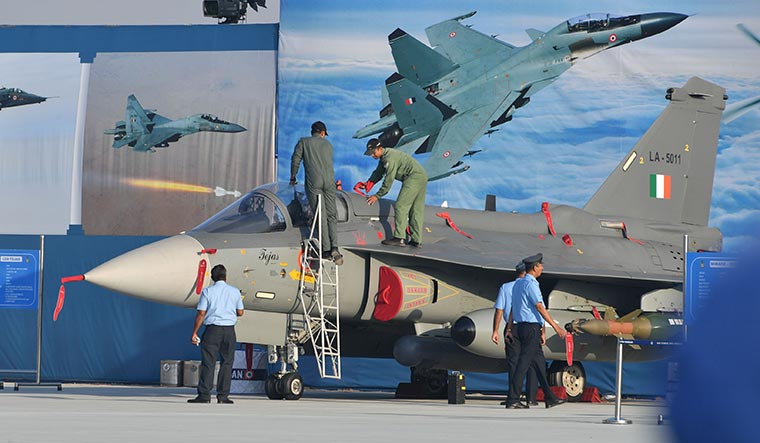In 2001, the first of the T-90 tanks rumbled along on Indian soil. It was powered by engines made in a tractor plant in Chelyabinsk, in west central Russia, and assembled in a Uralvagonzavod factory. It was bought on condition that the subsequent batches would be mass produced at the Heavy Vehicles Factory at Avadi, Tamil Nadu, under a transfer of technology regime. But, it was not that smooth.
Though the handover began in 2001, the documents were in Russian. They could all be translated into English only by 2007, causing a critical delay in absorbing Russian tank technology. There were murmurs in South Block that it may have been a ploy to delay technology handover, despite the traditionally close relationship with Russia. In some critical T-90 tank assemblies, documents were not transferred till July 2013.
Similarly, the Russian-origin fighter aircraft Sukhoi Su-30 first appeared over Indian skies in 2002. Even after more than two decades of being operated by the Indian Air Force and despite being mass produced by Hindustan Aeronautics Limited, there are areas of aero-engine technology Russia has withheld.
In a nutshell, in defence deals, the selling nation’s strategic interests rule and there is reluctance to share military know-how with the buying state. That is why the June 22 defence deals between India and the US―in the backdrop of growing bonhomie―have an inevitable business-like ring to them.
Hopes were high in New Delhi of a generous transfer of technology (ToT) because of the US interest to prop up India as a “strategic partner” in the Indo-Pacific to counter China and the fact that the deals were to be wrapped up during Prime Minister Narendra Modi’s state visit to the US, which followed US Defence Secretary Lloyd Austin’s June 4-5 India tour.
The expectations were on three critical counts. General Electric’s GE F414 engines to power India’s indigenous Tejas Mk2 fighter aircraft; General Atomics MQ-9B Reaper armed drones; and semiconductor manufacture. It was expected that there would be a 100 per cent ToT in GE F414s that would lead to co-development and co-production from India, and substantial transfer of technical know-how for the armed drones and chip making. But, it was not to be.
While the minute details are being worked out and intense price negotiations are on, it is learnt that the ToT component in the GE F414s would be capped at about 80 per cent, and that there will just be an assembly line and an MRO (maintenance, repair, overhaul) facility for the MQ-9B drones. There will also be an assembly centre and test facility for semiconductors.
Indian officials tried to put up a brave face. An official involved in framing the pact for ToT of GE F414s told THE WEEK that the deal was significant because the US rarely shared so much technology―80 per cent. The deal is valued at more than $1 billion. Another official in the defence ministry’s production wing said no country today would offer total ToT of a key platform, no matter how close the ties were.
The key question, therefore, revolves around the fine print. What kind of technology will be shared and which ones will be off-limits? For instance, will the US transfer aero-engine metallurgical know-how? Metallurgical composition of turbine blades for aero-engines has been a stumbling block to India’s indigenous effort that began in 1986. While unconfirmed reports say that the GE F-414 ToT will cover 11 critical areas including coating for turbine blades, combustor laser drilling technology and fabrication technology, there is nothing about the metallurgical mix.
Tejas light combat aircraft, the first home-made fighter, was fitted with GE F-404 engines that were bought with no ToT. The F-414 powers the US F-18 Super Hornet fighters―expected to be phased out from 2025 onwards. The most advanced frontline fighter in the US fleet is the Lockheed Martin F-35, fitted with the Pratt and Whitney F-119 engine. While it is being said that India has no requirement for a deep-strike aircraft like the F-35, it or its F-119 engine is yet to be offered to India despite being in use in many countries, including Japan, Korea and Israel. Six countries―Belgium, Poland, Singapore, Finland, Germany and Switzerland―are set to induct it soon.
The HALE (high altitude long endurance) MQ-9B drones achieved near-legendary status in West Asia and Afghanistan in the 2000s. But, its relevance will be put to test in India. After the border clash with China, the Indian Navy has been operating two MQ-9Bs taken on lease. In the latest deal, India is looking at 15 MQ-9Bs for the Navy and eight each for the Army and the IAF. In the US, there is already talk of phasing out the MQ-9B.
On June 22, in a briefing at the US department of defence, Pentagon press secretary, Air Force Brigadier General Pat Ryder, said the aim was to make India a logistics hub for the US and other partners in the Indo-Pacific region. “And so we intend to support India in the creation of logistics, repair and maintenance infrastructure for aircraft and ships,” he said. However, three foundational India-US deals―the Logistics Exchange Memorandum of Agreement, signed in 2016; the Communications Compatibility and Security Agreement of 2018; and the Basic Exchange and Cooperation Agreement of 2020―already bind the two nations in a close military embrace.
The latest deal agrees to carry forward plans to ink a security of supply arrangement and a reciprocal defence procurement agreement―the fourth foundational agreement to underline the major defence partner status given to India in June 2016. These two initiatives seek to ensure uninterrupted supply of military equipment in the event of unanticipated supply chain disruptions.
It is therefore only fair to ask whether the military hardware and the stated terms and conditions offered are really commensurate with the close bound and warming ties that India and the US are beginning to cherish.


